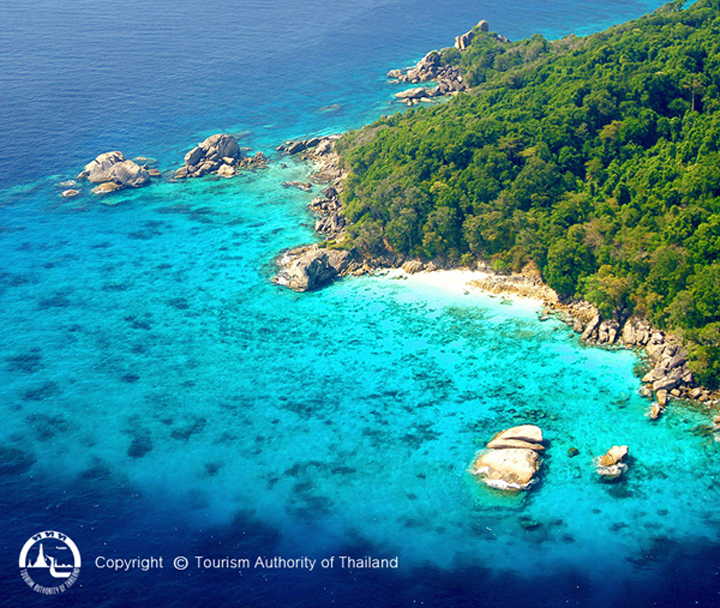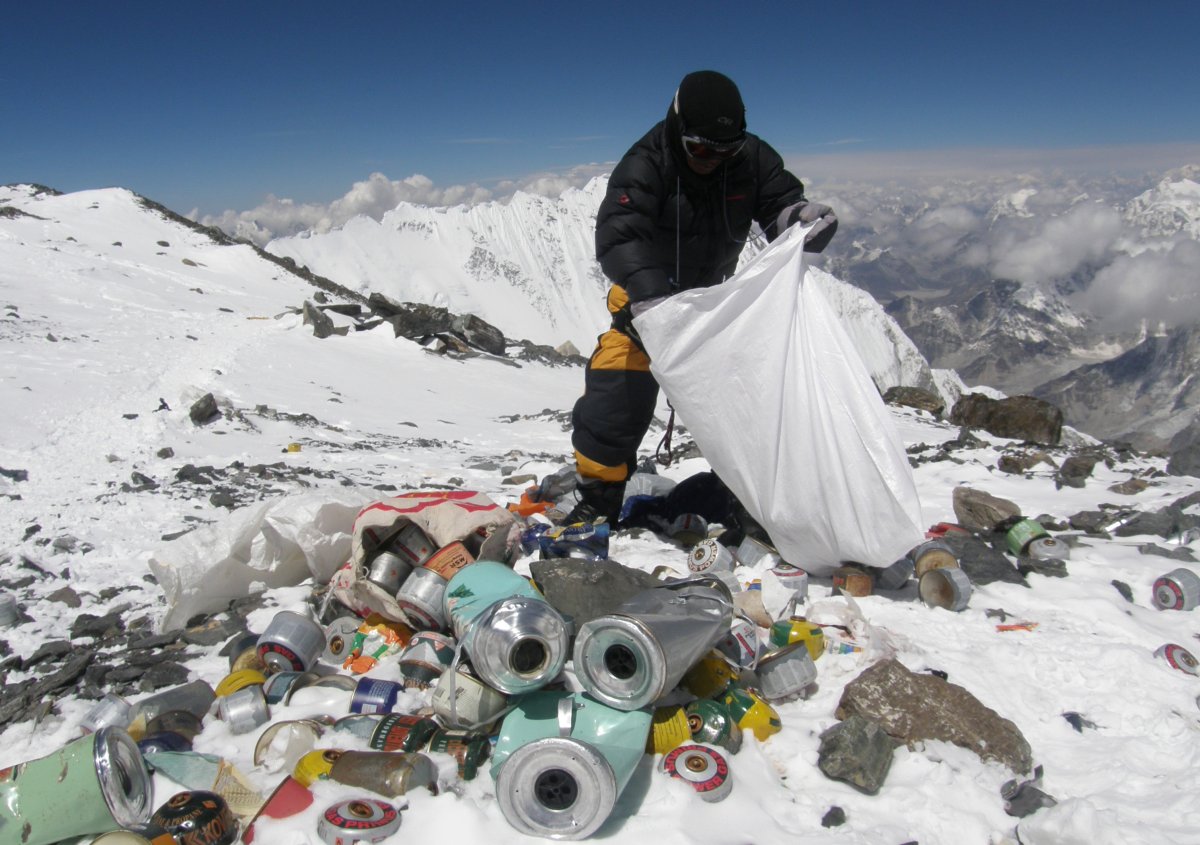Tourism can be the lifeblood of a country’s economy. But as travelling becomes more accessible and affordable, more people are flocking to popular tourist destinations hoping to take in the Mona Lisa, hike Mount Everest, or snorkel with sea turtles in Ecuador.

And it can have some devastating consequences on the environment.
“Tourism is a classic two-edged sword,” said Jonathan Tourtellot, founder of the National Geographic Center for Sustainable Destinations. “It can help an economy but also can actually do damage to what is being visited.”
Tourtellot calls it “over-tourism.”
“Over-tourism is a new term that’s been building over the last few decades, and simply means there are too many tourists,” he said.
WATCH: Tourism dollars trump environmental concerns as Thailand’s national water fight to go ahead

As a result, cities and landmarks are capping how many visitors can flock to certain destinations to curb environmental degradation.
For example, tourists visiting the Pacific nation of Palau (home to pristine beaches and abundant sea life), have to sign an eco-pledge before entering the country — a move that authorities say will help curb ecological damage caused by the soaring numbers of tourists.
Here are some other popular destinations feeling the wrath of over-tourism.
Maya Beach, Thailand
Last week, Thailand announced it was closing a popular beach to tourists for at least three months as a way to reverse damage to the coral reef and sea life in the area.
The once “quiet” Maya Beach on Phi Phi Leh island jumped into popularity after its beauty was highlighted in the Hollywood film The Beach starring Leonardo DiCaprio.

Get breaking National news
The beach receives an average of 200 boats and 4,000 visitors each day. Recent surveys by a team led by marine biologists found a large part of the coral reefs around the area are gone and sea life has virtually disappeared.
The Thai government said the number of visitors on the beach was unsustainable. When the location reopens, government officials will enforce a daily quota of visitors.
Koh Tachai, Thailand
Another popular Thai bech, Koh Tachai, has been closed to the public for almost two years because of mass tourism.
Thailand’s Department of Marine and Coastal Resources said that the effects of over-tourism, which saw more than 60 speedboats a day visiting the islands, were hurting natural resources and accelerating the dangerous coral bleaching process.
Boracay Island, Phillippines
The Philippines’ Boracay Island attracts nearly two million domestic and foreign visitors every year because of its fine, sugary white sand, lively night scene and abundant water sports.
But at the end of April, it may close to travelers. This comes after Philippines President Rodrigo Duterte visited the popular tourist destination in February and called it a “cesspool.”
Duterte said he has given the country’s environment secretary six months to fix up the mess on Boracay island, which he said was overdeveloped and had become a “disaster,” citing piles of uncollected garbage just 20-25 metres from the beach and sewage flowing into the sea.
Mount Everest, Nepal
Hundreds of tourists flock to Mount Everest every year in hopes of conquering the mountain. But the amount of people has also had a huge impact on the fragile environment. This is because climbers take oxygen bottles, food, plastic, and other products with them, and sometimes left those items behind.
It is a rule that mountaineers are required to bring back the waste they generate on they climb, but every year local guide still gathers hundreds of kilograms of garbage, according to the BBC.
Galápagos Islands, Ecuador
The Galápagos Islands, made famous for its huge number of unique species, has seen a huge increase in the number of visitors over the past few decades, making tourism a large source of income for Ecuador.
READ MORE: Statue of Liberty, Easter Island among World Heritage sites threatened by climate change
However, the growth in tourism has had an undeniable impact on the islands. For example, scientists discovered that a mosquito, which carries avian malaria and threatens the ecosystem of the islands, was being brought in by tourists.
“Few tourists realize the irony that their trip to the Galápagos is putting a strain on the very unspoiled beauty they are there to see,” Tom Hall of the travel guide Lonely Planet told the Guardian.
Dubrovnik, Croatia
![Dubrovnik, Croatia, has been brought to the spotlight thanks to Game of Thrones. The city serves as the setting of King’s Landing, causing hoards of tourists to flock there every year.Although the tourist boom has been great for the country’s economy, it has also caused overcrowding (in what is being called cruise ship tourism) and UNESCO is threatening to take away its World Heritage status.The city is now capping the number of people and cruise ships who can visit.Tutankhamun’s tomb, EgyptSince the tomb of Tutankhamun was discovered in 1922, hordes of history buffs have traveled to Egypt to see the legendary young king.[readmore label="READ MORE: " link="https://globalnews.ca/news/2583339/hidden-rooms-discovered-in-kin-tuts-burial-tomb/"]But decades of tourism started to take their toll on the tomb. Moisture from the breath of visitors started damaging the murals and walls. It became so bad that Egyptians had to temporarily close the burial chamber. His mummified body remains on display in an oxygen-free case.Sustainable tourismTourtellot said there are ways to travel in a sustainable way. For example, try to support tour groups that are environmentally responsible and try to give back to the local economy.[readmore label="READ MORE: " link="https://globalnews.ca/news/4072700/antarctica-tourism-climate-change/"]“Be aware of the impact you have,” he said. “If you’re traveling on a cruise ship and only spend four hours at the place and then leave, then none of your money will go to the local economy.”He said it’s also up to governments to help educate tourists.“People are not instructed on how to behave around coral reefs – so standing on the reef, kicking sand on it… tourists haven’t been told. It could be innocent damage, which is very common when you have uninformed people.”WATCH: Eco-tourism on the rise in B.C.[tp_video id=2684239]— With files from the Associated Press](https://globalnews.ca/wp-content/uploads/2016/03/amr107-115_2015_103952_high.jpg?quality=85&strip=all)










Comments